TRACING TASTE
Unwrapping Origin, Terroir and Identity in Chocolate
That’s the ‘Terroir Talking’
Terroir is a loose term that encompasses various things. What they are depends on whom you ask. In general, though, it means ‘a sense of place’.
Essentially, terroir encompasses all of the factors that go into producing wine grapes in a vineyard, from the climate to the soil to the elevation.
In terms of wine vines, terroir encompasses nothing short of the vine’s total environment -and the way in which all aspects of the environment are consistently reflected in the taste of the wine. A wine from this place should taste unlike a wine from that place and we should expect this distinctiveness to be evident year in and year out. That’s the terroir ‘talking’.
Though the term can be applied to any agricultural product of the soil, the concept of terroir is recognised outside of France mostly in terms of wine and, specifically, for its implication of quality and/or identity.
While terroir can be a good indicator of quality, it is by no means the only, let alone blissful, superpower or factor that results in extraordinary wine -or delicious chocolate.
Digging into the Original Concept of Terroir
The idea behind terroir is quite old, dating back to the Ancient Greeks who engaged in extensive winemaking. Ancient Greece had plenty of climatic variations, with vineyards exhibiting different results even when growing the same grape variety. The ancient idea of ‘terroir’ led the Greeks to stamp their amphorae jars to identify where they came from.
As the Romans expanded their empire, they applied the same practice to their winegrowing regions. Because after all, once the Romans controlled Greek territory, they copied everything from their art and architecture to religion…
The idea took on deeper meaning by the time of the Benedictine and Cistercian monks in Burgundy, where monasteries took control of the vineyards.
The concept of terroir became more popular in France as phylloxera (an insect pest) forced French winegrowers to grow their grapes on American rootstock. Terroir, relating to soil and sense of place, allowed French winemakers to reclaim local pride in their winegrowing, even though their plants grew on new stock.
The word terroir quickly spread throughout the wine world as a way to talk about the effects of the environment on wine.
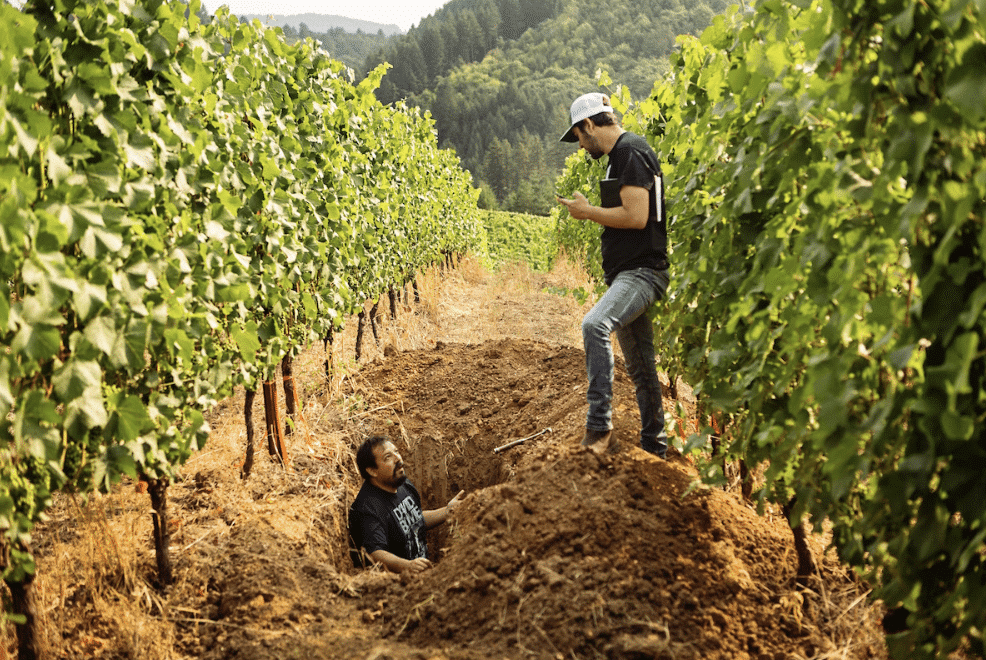
Terroir in the Creation of Wine & Chocolate
The natural and scientific components of winemaking are similar to the production of numerous other products. These products share the core processes and procedures of winemaking, but deviate at some point in their unique lifecycles. The end results bear the imprint of the winemaking process but are distinct unto themselves.
Examples abound. Coffee, cheese, bread, yogurt, beer, olive oil, spirits and of course our beloved chocolate share certain critical steps of winemaking that have a major influence on the end product sold in the marketplace.
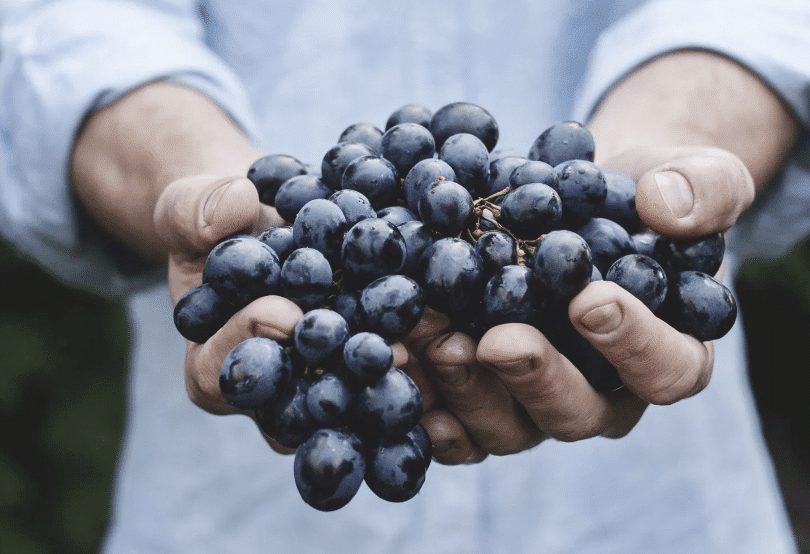
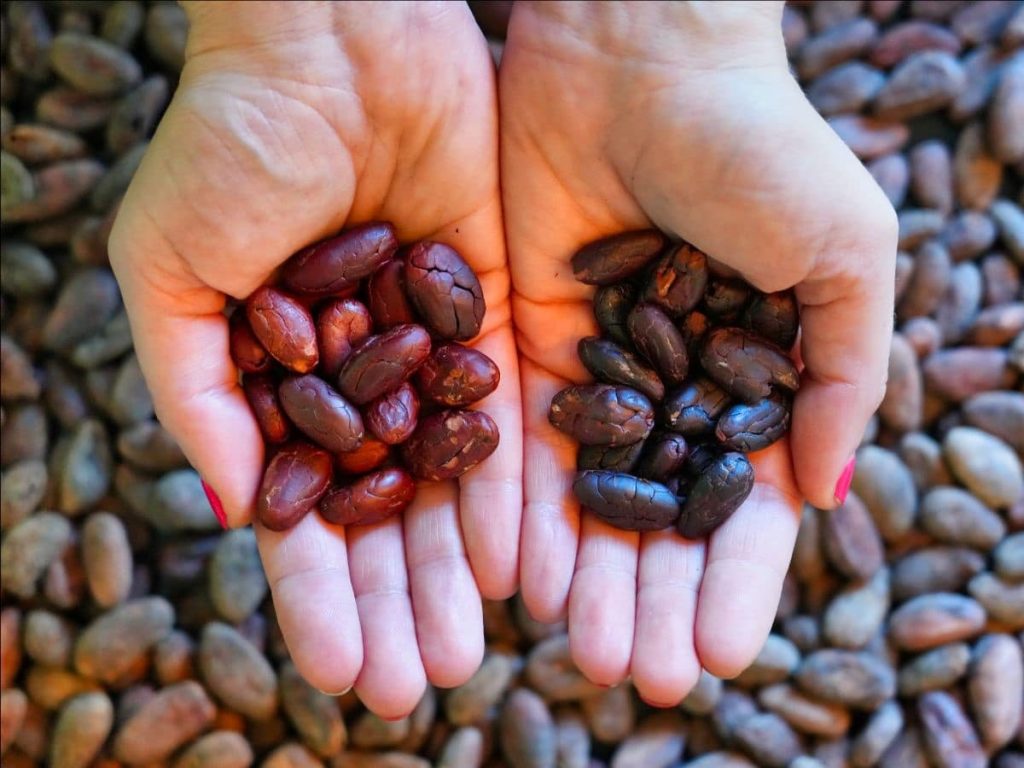
So let’s compare the ‘ingredients’ and processes that result in your favourite wine and beloved chocolate. To do so, we have identified four major elements along the production chain that we feel best exemplify these similarities:
The Baseline : Environmental Factors aka the Terroir
Wine: Grapes only thrive under a very specific balance of soil, climate, elevation and exposure to the sun -collectively called terroir.
Chocolate: Cacao beans are grown within 20 degrees of the equator. The cacao tree is a real rainforest inhabitant. It needs fairly uniform temperatures, high humidity and a lot of precipitation. In addition, it requires a nitrogen-rich soil and prefers to grow under other, taller trees.
The Core : Ingredients aka the Genetics
Wine: The horticultural species that produces the finest wine grapes is ‘Vitis Vinifera’. From this species, hybrids have been developed that thrive in specific regions. All of the most familiar grape varieties used for wine production belong to ‘Vitis Vinifera’.
Chocolate: The species for making chocolate is ‘Theobroma Cacao L’. Molecular analysis of the genetic material differentiated cacao into 10 major ‘genetic clusters’, like Amelonado, Contamana, Criollo, Curaray, Guiana, Iquitos, Marañón, Nanay, Nacional and Purús, and more groups are being identified. In addition a wide range of cultivars and hybrids are grown. The genotypes are not to be confused with ‘phenotyping’ refering to the colour and shape of the cacao pods.
The Process** : Transformation aka the Magic
Wine: To create a fine wine, grapes must be harvested at a precise time each year. Once grapes arrive at a winery, they are sorted into bunches, destemmed, and crushed. Harvested grapes are fermented for various periods of time using selected yeast forms and then processed in a winery to achieve the desired aroma, flavour and alcohol profile.
Chocolate: Just like winemaking, the harvest and post-harvest processes are critical steps that distinguish one cacao from another. It consists of 4 steps: harvesting cacao pods >> fermentation >> drying beans >> storage dried beans. These steps, in the hands of a post-harvest maestro -the second link in the chain- provide us the basis and flavour precursors that chocolatiers are looking for. Fermentation is a natural or spontaneous process, no cultures of yeast or bacteria are added.
The Final Touch** aka Mastery
Wine: Decisions made by the winemaker after fermentation is complete, can add further aroma complexity to a wine. For example, wines that undergo a process called ‘malolactic conversion’ may have buttery aromas, while wines that are aged in new oak barrels may take on aromas of vanilla from the oak. Fermented wines can be aged and/or blended by a winemaker to craft a unique statement of his or her creativity.
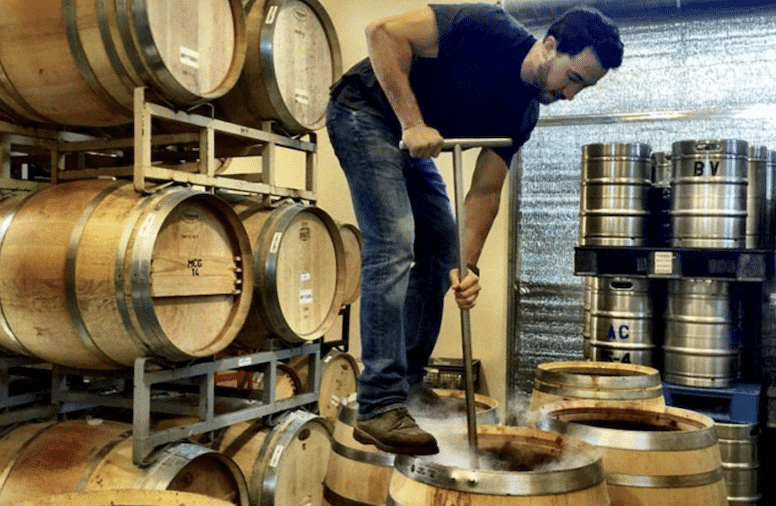
Winemaker Jesse Katz
Chocolate: A chocolate maker* -a bean-to-bar company that produces chocolate by processing cacao beans into a product inhouse & the third link in the process- roasts the raw beans. Roasting cacao beans is crucial in developing their flavour. The beans are cracked, and then the shells are winnowed from the nibs using jets of air. Afterwards the cacao nibs are ground using a machine known as a mélangeur grinder into a paste known as cacao liquor. Extra ingredients such as sugar and milk powder are added during this stage. Next the chocolate will be tempered. This is the process of raising and lowering the temperature of the chocolate to alter the crystals within. Tempered chocolate is shiny, firm and has that recognisable snap. The final stage is that the tempered chocolate is poured into molds to make bars of chocolate that can then be wrapped.

Photo credits : Bare Bones - controlling aroma while roasting
The Relevance of Terroir in Chocolate
If you want to fully understand the range of possibilities of your cacao beans, it is not only very interesting but also smart to do a complete identity check of your cacao. With such a background check you can find out quickly and specifically where, how and by whom the cacao beans are produced and how to unlock the complete flavour potential.
If you want to fully and completely identify the identity of your cacao beans, and its possibilities, you need to go beyond this traditional concept of terroir -place of sense.
You will have to explore the interconnected web of relationships that produce chocolate: from its genetic make-up, to it’s raw state and growing conditions, via its harvesting and post harvesting processes to the chocolate production process and the final moments of appreciation.
Along the journey, many questions may arise: what is the genetic make-up? how was the cacao fermented? How was it dried? How to process? How to roast?
After all, the final chocolate product embodies a series of actions that determine the final taste: from deciding when to harvest and choosing certain cacao pods to balancing slime-to-seed ratios during the fermentation process and manipulating texture and aroma with roasting and grinding
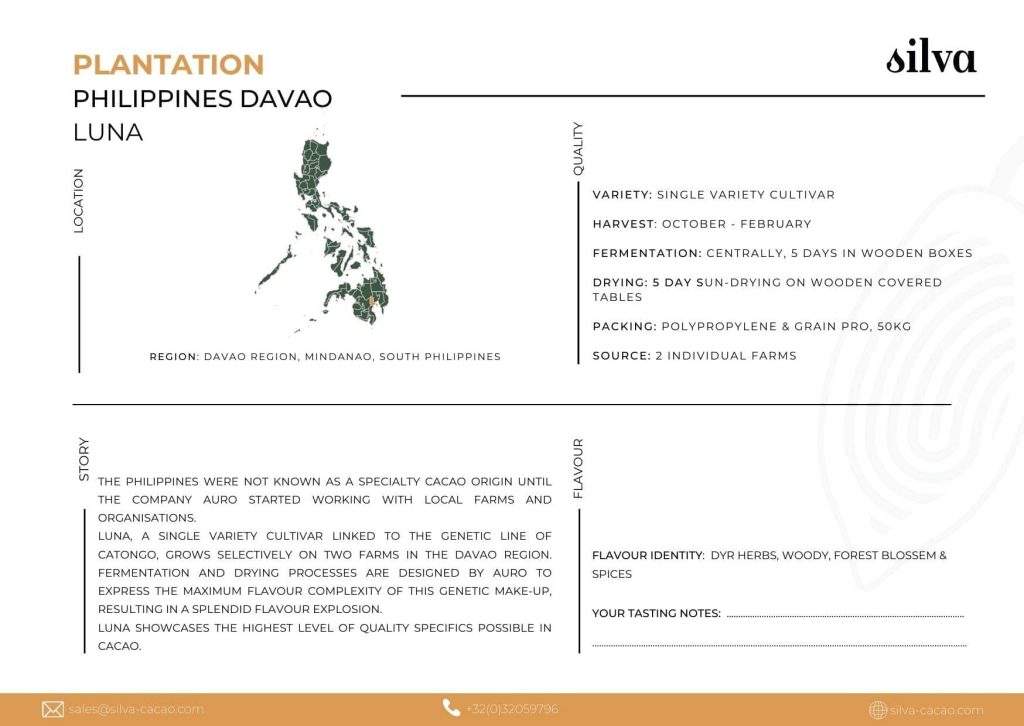
Looking Beyond the Traditional Concept of Terroir
Let’s look at some research, insights and lessons learned to illustrate and understand the importance of ‘looking beyond the traditional concept of terroir’. Because the more we know about the origin, provenance, genetics and processes used, the better we can honour the cacao and its flavour potential. Below you will find some food for thought:
BEYOND Terroir Magic – When Micro-Organisms Meet Post Harvest Maestros
- One of the particularly cool things about cacao is the huge influence post harvest fermentation has on the flavour.
- Flavour begins with the genetics of cacao and its precursors are ‘translated’ during the post-harvesting processes into distinguishable characteristics.
- Cacao is spontaneous fermentation; farmers rely on natural microbes in the environment to create unique, local flavours. In the same way that grapes take on regional terroir, these wild microbes, combined with each farmer’s particular process, confer terroir on beans fermented in each location.
- This is the power of post-harvest: to change, convert, transform. It takes the usual and makes it unusual – thanks to the magic of microbes and the skills of the post harvesting maestro.
- Since fermentation must be done on or near the farm it is the skill of these immediate post-harvest processes and maestros that have such a big influence on flavour. This is all the more reason for chocolate makers and chocolate lovers to communicate with, respect, and learn with cacao farmers.

Alfonso Tapia – aka ‘Don Alfonso’ - El Castillo, Río San Juan, Nicaragua.
BEYOND Terroir Magic – When Terroir Meets Micro-Climate
- Local conditions must always be taken into account. Depending on remoteness, rainfall, humidity and genetic makeup, certain processes may need to be modified.
For example, while natural drying in the sun may be preferable on certain islands where the humidity is very high, drying on covered beds and finishing up with artificial drying may be preferable where there is a high risk of mould formation due to excessive humidity.
BEYOND Terroir Mystery – Possible ‘between Tree & Mouth’ Gap
- There is a physical and figurative gap ‘between tree and mouth’ that hinders the expression of terroir in chocolate.
- As cacao travels thousands of miles from tropical growing regions to factories in Europe and North America -and the general practice is to blend different sources-, it becomes increasingly difficult to trace the origins of cacao in the final chocolate product.
- The place of manufacture often takes over the place of origin of the beans. A closer proximity between cultivation and production, in addition to fewer transfers of ownership and an identity preserved mindset would begin to narrow this gap.
- With more control over the entire cacao-to-chocolate chain, terroir -or chocolate’s “sense of place”- can be better preserved.
Some Thoughts on Fetishing Terroir in Chocolate
- For the French, terroir is almost spiritual. But on a more down-to-earth level, the traditional concept of terroir can also have real meaning for us. Like grapes, cacao pods are finicky fruits. In some places they grow well, in others badly. One likes cool, misty weather, the other preferes smothered sunlight.
- Cultural pseudo traditional terroir may be less regionally distinct than it once was, but terroir proper inevitably persists. We are only forced to accept that its influence is more limited than we previously thought.
- By looking beyond the traditional concept of terroir, we can better appreciate the extraordinary relationship that our beloved ‘theobroma’ builds between its constant, unyielding nature and those mercurial, rebellious creatures that try to capture it in a piece of chocolate.
- Terroir can provide clear points of differentiation in chocolate marketing – particularly by providing symbolic meaning around authenticity and a sense of ‘real place’, valuing or honouring the identity of the beans.
However, as also noted, the concept is shrouded in ambiguity; it is clear that different audiences may have different interpretations of the term, and when it is overlaid with ideas about culture, identity and naming, the whole concept becomes even more complicated. - In this article we have tried to make sense of these interacting aspects of terroir, and while hardly all the ambiguities have been resolved, we hope to have provided some framework; a realistic picture where the competing environmental, metaphysical and marketing interpretations merge around the feeling of terroir as identity.
- So while details of terroir are undoubtedly a factor, they are all too often misused as a marketing term. This isn’t to say that chocolate isn’t terroir worthy, but instead and rather that it’s too complex for it…
- So while details of terroir are undoubtedly a factor, they are all too often misused as a marketing term. This isn’t to say that chocolate isn’t terroir worthy, but instead and rather that it’s too complex for it.
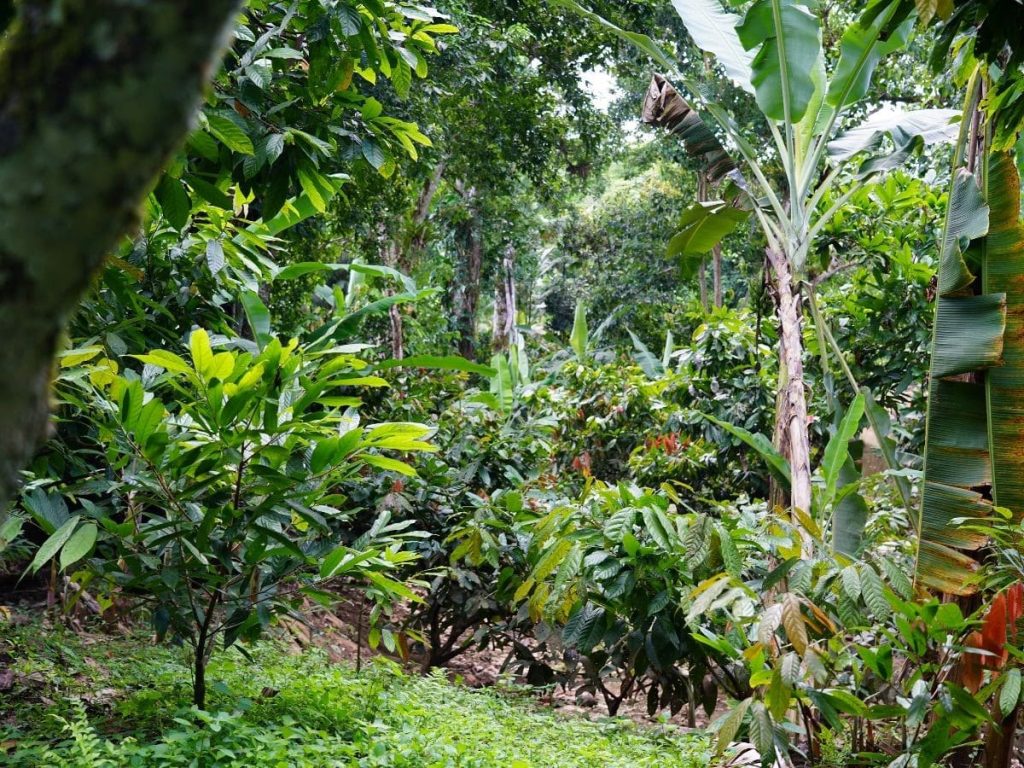
The Future of Terroir in Chocolate
- Investigating ‘terroir’ in chocolate is investigating the ‘origin and identity’ of a chocolate bar. Regardless of single variety, single farm, single origin or multiple origins, labeling the beginning of a chocolate bar invites curiosity about its origin and what sets it apart. This paves the way for more socially responsible chocolate. For example, an excellent chocolate bar with origins from lesser-known chocolate-producing regions, such as Thailand Chanthaburi, could be a positive representation.
- As consumers become more interested in where their chocolate comes from, chocolate makers have an incentive to get closer to the ‘sense of place’. Combined with further research into different bean varieties and place distinctions, there is much to look forward to for the future of ‘terroir’ in chocolate.
- To this day there is very little publicly available info or research on the importance or influence of terroir, with the potential danger of simplifying meaning.
- Whether you want to believe in terroir or not, it’s totally up to you. But as a chocolate consumer, don’t ever let it be a decisive part in your purchasing process, and don’t let anybody convince you that you should like a specific chocolate because of ‘terroir’, especially when your palate says otherwise and when you have no idea what’s actually happening at the origin and source.
KUDO’S, CREDITS & INSPIRATION
* A chocolate maker purchases raw cacao beans and then processes, roasts, and grinds them into chocolate. Chocolate makers are not to be confused with a chocolatier. Chocolatiers make chocolate creations from chocolate they purchase from a chocolate maker.
** The 8 stages of Making Chocolate from Bean to Bar
1. Harvesting: Chocolate is made using cacao beans which come from the ‘Theobroma cacao’ tree. Harvesting is usually done by hand as great care is needed to ensure the bark of the tree is not damaged.
2. Fermented: The beans and pulp are exposed to oxygen and begin to ferment as soon as the pods are opened. A complete fermentation takes 5 to 8 days.
3. Drying & Storing: Most cacao farmers dry their beans by laying them in the sun for several days. Once dried, the beans are sorted and bagged before being shipped to makers around the world.
4. Roasting: Roasting cacao beans is crucial in developing their flavour. Roasting also kills off any lurking bacteria whilst loosening the outer shell of the bean.
5. Cracking & Winnowing: The beans are cracked and the shells are winnowed from the nibs using jets of air. The cacao nibs are used in the production of chocolate.
6. Grinding and Conching: Cacao nibs are ground using a machine known as a mélangeur grinder into a paste known as cacao liquor. Extra ingredients such as sugar, milk powder, or vanilla are adding during this stage.
7. Tempering: Tempering chocolate is the process of raising and lowering the temperature of the chocolate to alter the crystals within. Tempered chocolate is shiny, firm and has that recognisable snap.
8. Molding & Wrapping: The tempered chocolate is poured into molds to make bars of chocolate. Once the chocolate is solidified it’s wrapped in foil or paper packaging to keep them fresh.
Tim Atking – Talking Terroir
Rod Phillips – The Great Terroir debate – Wine on the Rocks
The Alcohol Professor – Talking Terroir with Pedro Parra, PhD
Pedro Parra – Terroir Footprints
Revista Adega – Uma entrevista com O Mr Terroir
Devil Proof Vineyards – Jesse Katz
The New York Times – Everything You Don’t Know about Chocolate
Acta Horticulturae – The impact of processing location & growing environment on flavour in cocoa – implications for terroir and certification
*Bill Nesto – ‘Discovering terroir in the world of chocolate’ Gastronomica 10, no. 1 (2010): 131-135
Silva Cacao – Everything you always wanted to know about cacao genetics.
Silva Cacao – Thailand Chanthaburi
Silva Cacao – Philippines Luna
